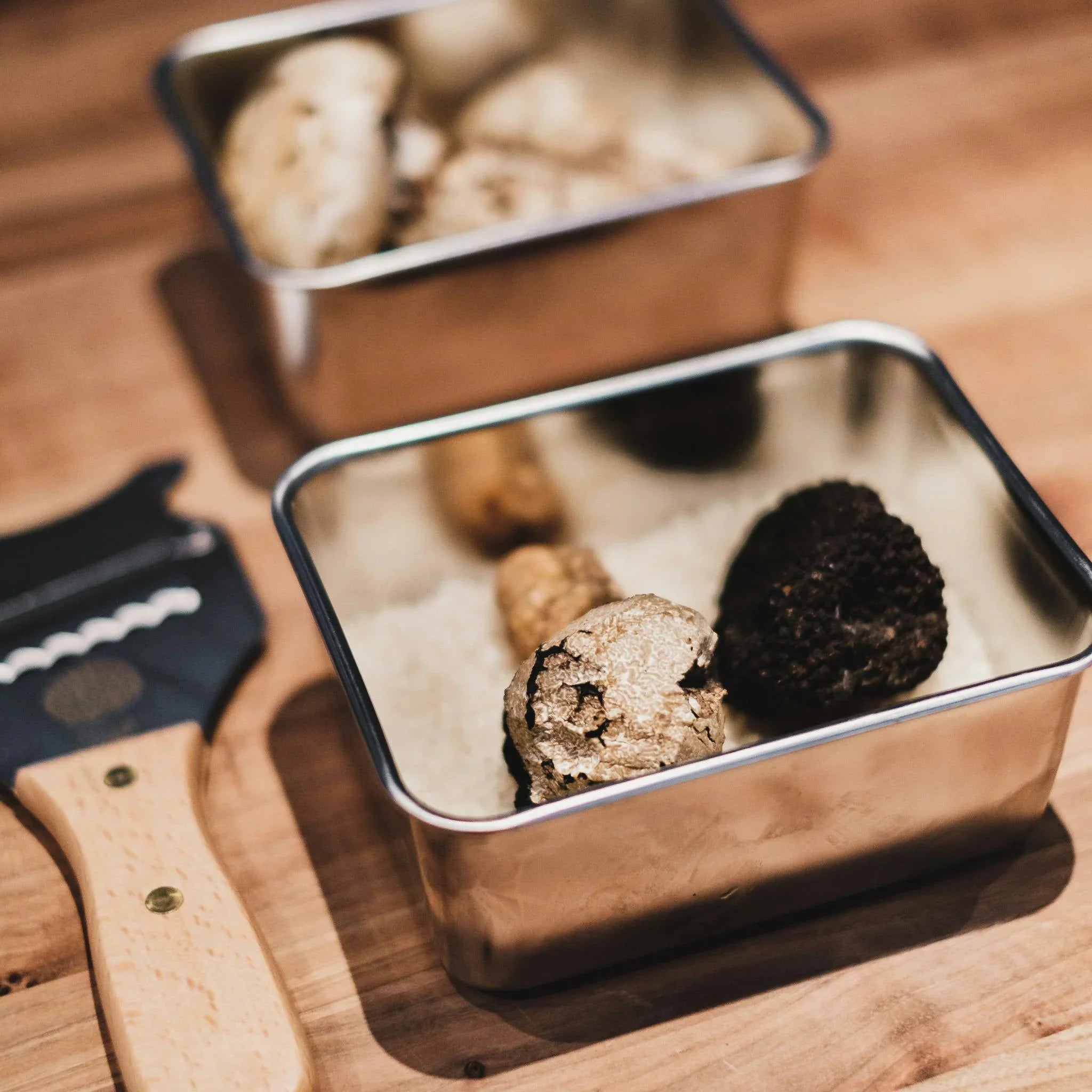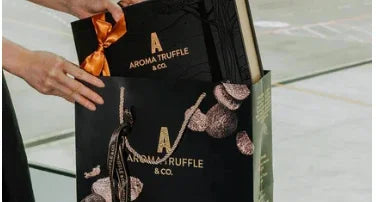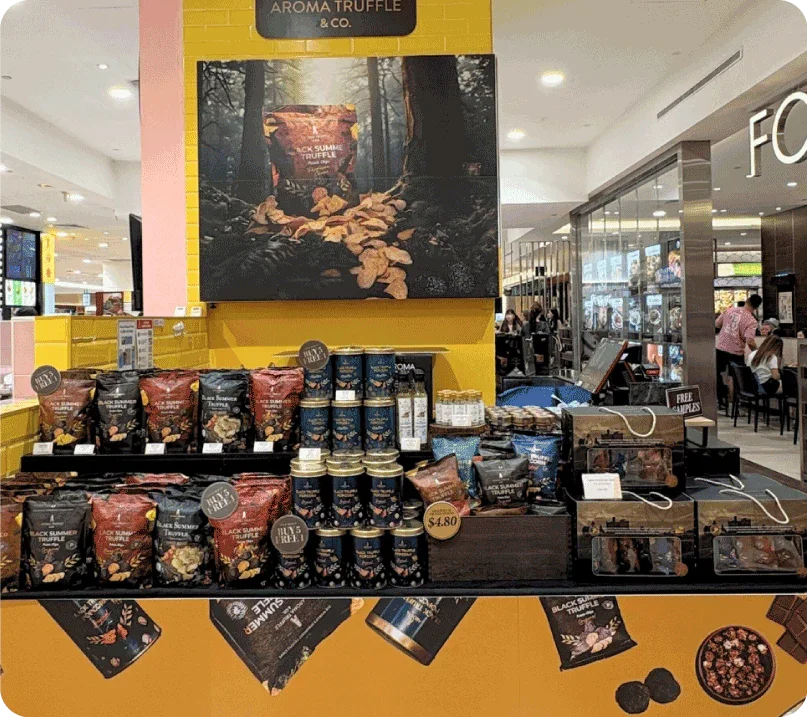
White Truffle vs Black Truffle: What’s the Difference?
Some flavors feel like limited drops. White truffle shows up for a short season with a bold, instant aroma. Black truffle appears more often and plays well with everyday cooking. If you’ve wondered which one fits your taste and your kitchen, here’s a simple breakdown no jargon, just what matters.
What makes truffles special?
Truffles grow underground near tree roots and only in a few places. They’re seasonal, hard to find, and each variety behaves differently in the kitchen. That mix of rarity and character is why people get excited about them. The good news: you don’t need a fine-dining reservation to enjoy the flavor. There are easy ways to bring it home, from a quick drizzle of oil to a handful of truffle-seasoned snacks.
White truffle: bold and fleeting
White truffles are most famous in Alba, Italy, and usually arrive from September to December. Open a container and the smell hits fast sharp, garlicky, with a hint of shallot. Heat can dull that aroma, so the best way to use white truffle is raw, shaved over warm dishes like pasta, risotto, or soft eggs. The warmth releases the scent without cooking it away.
Because the season is short and the fragrance is delicate, white truffles are treated like a special-occasion ingredient. A little goes a long way, and the effect is immediate. Keep the base simple good butter, fresh pasta, a pinch of salt and let the aroma do the work.
Black truffle: earthy and versatile
Black truffles grow in France, Spain, Italy, and other regions. You’ll find both winter and summer types, so they show up more often. The aroma is gentler than white truffle, with earthy, nutty notes that hang around longer especially when heated.
That’s the key difference: black truffle handles heat well. You can fold it into butter or cream, whisk it into a sauce, or infuse it into oil. Instead of fading, the flavor spreads through the dish. Try finishing roasted potatoes with truffle butter, stirring a little into scrambled eggs, or drizzling truffle oil over a mushroom pizza. It plays nicely with mild cheeses, poultry, and mushrooms.
So… which one should you choose?
Think about how you like to cook and eat. Choose white truffle if you want a big, memorable scent at the table. Keep it simple and warm fresh pasta, risotto, eggs, even a buttered potato, and shave it on top. Choose black truffle if you like to build flavor in the pan.
It blends neatly into butter, oil, cream, cheese, and mushrooms, and it’s friendly with eggs, potatoes, pizza, chicken, and roasted vegetables. There’s no wrong answer. White brings a fast, bright burst; black brings a steady, cozy depth that works with lots of dishes.
Easy ways to enjoy truffles at home
You don’t need the whole truffle to experience its flavor. That’s where Aroma Truffle helps. Our products capture the character of real truffles in simple formats you can reach for any day.
-
Truffle chips: crunchy, savory, and scented with real truffle essence—great for sharing or snacking.
-
Truffle oil: a drizzle on eggs, pasta, fries, or roasted vegetables adds that unmistakable note in seconds.
-
Truffle popcorn and snacks: quick, tasty, and no cooking required.
New to truffles? Start with chips or oil and see which profile you prefer. Already a fan? Keep a bottle of truffle oil by the stove, and you’ll use it more than you expect.
Good-to-know facts & handy tips
-
Origin snapshots: White truffles are closely linked to Alba, Italy. Black truffles are harvested across France, Spain, and Italy, with winter and summer varieties.
-
Heat behavior: White truffle aroma fades with high heat; black truffle opens up with gentle cooking.
-
Storage basics: Wrap fresh truffles in a paper towel, seal in an airtight container, and refrigerate; change the paper daily. Use white within a few days; black may last a bit longer.
-
Flavor friends: Truffles love simple fats, butter, cream, mild cheese, olive oil, and warm, neutral bases like potatoes, eggs, and fresh pasta.
-
A little goes far: Start small. A drizzle of oil or a light shaving is usually enough.
-
Budget cue: White truffle can cost several times more than black truffles. If you cook often, black truffle products are a practical choice.
-
Egg trick: Keep fresh truffles in a sealed container with eggs (shells on) for a day or two; the aroma gently perfumes the eggs.
Buying and storage tips
If you decide to buy fresh truffles, think small and use it soon. Ask to check the aroma on the spot, it should smell clean and distinctive, never sour. At home, wrap the truffle in a paper towel, place it in an airtight container, and keep it in the fridge. Change the paper daily.
For everyday cooking, well-made truffle oil, butter, or snacks give you consistent flavor without the pressure of a ticking clock.
Ready to taste the difference?
Bring either style into your routine easily. Explore snacks, oils, and more at Aroma Truffle and find your favorite way to add that unmistakable truffle flavor to everyday meals.



Leave a comment
This site is protected by hCaptcha and the hCaptcha Privacy Policy and Terms of Service apply.